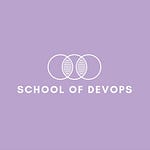🧭 Your Ultimate Primer on Large Language Models (LLMs)
The world of AI changed forever with the rise of Generative AI, fueled by foundational models like GPT-3.5 and beyond. These models aren’t just cool tools anymore—they’re transforming how businesses operate and how developers build. But if you’re a DevOps or tech professional trying to wrap your head around this fast-evolving space, it’s easy to feel lost in the jargon.
That’s why I created this beginner-friendly crash course on LLMs, tailored especially for those entering the world of MLOps and LLMOps. Whether you're a software engineer, DevOps practitioner, or tech enthusiast—this article will break it all down for you.
📚 What is an LLM, Really?
LLMs—or Large Language Models—are the backbone of tools like ChatGPT, Bard, Claude, and Copilot. They’re trained on massive datasets (think: the entire internet) and can generate human-like text, answer questions, summarize reports, write code, translate languages, and more. In essence, they’re prediction machines—playing a supercharged game of “guess the next word.”
Analogy: Traditional ML models are like niche bookstores; LLMs are like the Library of Congress—they’ve read everything.
🛠️ Core Concepts You Need to Know
Let’s decode the essential terms and mechanisms that make LLMs tick:
Tokens: LLMs don’t see text as words—they see tokens (chunks of text). Token limits are like short-term memory (think Ghajini or Memento).
Parameters: These are the model’s “memory cells”—the more parameters, the more knowledge it can store. GPT-3 has 175 billion!
Transformer Architecture: The breakthrough tech that enables models to “pay attention” to context rather than just read one word at a time.
Self-Attention & Multi-Head Attention: Key to understanding nuance. It helps models distinguish between “river bank” and “bank loan.”
Pre-Training vs Fine-Tuning:
Pre-Training: Like completing school—general learning from a broad dataset.
Fine-Tuning: Like specializing in law or medicine—adapting the model for specific tasks like customer support or code generation.
Prompt Engineering: The art of crafting your questions to get the best results—vital for accuracy, cost savings, and performance.
RAG (Retrieval-Augmented Generation): Adds external knowledge to overcome model limitations like knowledge cutoffs or hallucinations.
👩💼 Real-World Example: Meet Priya
Priya, a marketing manager in Bangalore, uses LLMs in her daily workflow:
Morning: Summarizes long research reports using ChatGPT.
Afternoon: Drafts client emails and social media posts with AI tools.
Evening: Translates content into regional languages like Hindi and Tamil.
LLMs are like having a versatile assistant available 24/7—efficient, fast, and multilingual.
🔧 Building Applications with LLMs
When you build with LLMs, you have two main options:
Use APIs (OpenAI, Google, Anthropic):
Easy to get started.
Pay-per-use (per token).
Limited control.
Host Your Own Models (LLaMA, DeepSeek, Mistral):
Full control and privacy.
Requires hardware, skills, and cost management.
You can also optimize performance and cost using quantization, distillation, or pruning—techniques to compress large models into lighter, more manageable versions.
⚠️ LLM Limitations You Should Know
Hallucinations: Confident but incorrect answers.
Knowledge Cutoff: Models don’t know anything after their last training date.
Biases & Logic Errors: Not great at math, puzzles, or contradiction detection.
Context Window: They “forget” previous parts of a long conversation.
🛠️ Solution? Use RAG, fine-tuning, and hybrid human-in-the-loop approaches—especially for critical apps like customer support.
🧪 Getting Started with LLMs
Here’s a simple path to begin your LLM journey:
Start with APIs: Play with OpenAI, Google Vertex AI, or Azure ML.
Master Prompt Engineering: Experiment with roles, chain-of-thought, and few-shot prompts.
Explore Fine-Tuning & RAG: Build specialized apps using vector databases and document retrieval.
Monitor & Optimize: Use tools for FinOps, prompt versioning, and hallucination detection.
🎓 Final Takeaways
LLMs are here to stay. They’re the engines of today’s AI revolution.
Prompt Engineering is your superpower. Better prompts = better results + lower costs.
Fine-tuning + RAG = Next-Level AI Apps. Adapt generalist models to your specific needs.
Whether you're looking to build smarter internal tools, customer support agents, or personalized AI apps, this is the time to level up your LLM game.
🚀 Ready to Go Further?
At School of DevOps & AI, we’re building real-world, hands-on programs to help DevOps professionals step into the world of AI, MLOps, and LLMOps. Explore our Mini-Degree Programs, take on guided challenges, and transform your career with AI-powered DevOps skills.




